Big Sky, Montana

From Beantown to Big Sky
How CrossHarbor Capital’s Sam Byrne revitalized Yellowstone Club and realized a vision for the Big Sky we know and love today.
If you’ve spent much time in Big Sky, you might have run across the name Lone Mountain Land Company. It’s the outfit behind the development of Town Center, Moonlight Basin, and Spanish Peaks Mountain Club. You might also have heard the name CrossHarbor Capital, parent company of LMLC.
But how did a Boston-based private equity firm find its way to the wilds of Montana? And how did that event morph into the visionary community building of Lone Mountain Land Company?
Like so many good things in life, it started with a ski trip.
“I fell in love immediately. The ski experience was so extraordinary.”
Sam Byrne, Cofounder and Managing Partner at CrossHarbor Capital
The year was 2005, and CrossHarbor’s cofounder and managing partner Sam Byrne arrived at Yellowstone Club as the guest of a family friend. “I fell in love immediately,” he recalls. “The ski experience was so extraordinary.” It was also revelatory, because at the time so much attention in the premium ski market was directed toward the likes of Deer Valley in Utah, and Beaver Creek in Colorado. But Yellowstone Club’s 2,200 skiable acres (now 2,900 acres) surpassed both. Byrne likes to cite a comparison with Beaver Creek. Roughly the same size as Yellowstone Club, Beaver Creek does 1.1 million ski visits per year. Yellowstone Club does just more than 70,000.
Byrne enjoyed his visit to Yellowstone Club enough to become a member that same year. As the story goes, Sam’s wife, Traci, agreed to the membership… “as long as you promise you’ll never get involved.” Obviously, things changed.
Before we fast-forward to Byrne’s eventual purchase of Yellowstone Club, let’s rewind a moment. Byrne grew up in Marblehead, Massachusetts, where his mom worked in real estate. When Byrne was 17, he filled in for an agent in his mother’s firm—and made a $1 million sale. From that point on, he was hooked. After graduating from Tufts University in 1986, he learned the ropes of restructuring bad loans for Bank of New England. By the age of 26, he had struck out on his own, starting CrossHarbor Capital Partners in 1992. The firm specialized in real estate, and Byrne had a particular affinity for structuring deals to acquire distressed properties. His passion for racing off-road vehicles and powder skiing are likely related to his career path. Sam Byrne likes calculated risks.
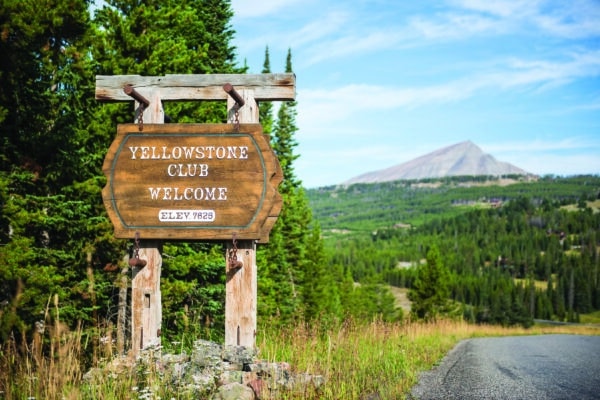
The entrance to Yellowstone Club. Photograph courtesy of Lone Mountain Land Company
Yellowstone Club Rescue
In 2008, Yellowstone Club was in the midst of a messy bankruptcy. The principal owner had taken out a large loan, using the club as collateral. He was being sued by his limited partners and at the same time going through a divorce. The principal asset in the divorce? The overleveraged club.
Despite the financial troubles, of course, Yellowstone Club still had a lot going for it. The setting is one of a kind and the ski experience is too. But more than that, Byrne recognized that the Yellowstone Club needed to coexist with the larger community of Big Sky to thrive. The goal would be to tie the communities and infrastructure together with great people. Byrne never lost sight of that even while the YC was floundering. Remember, this is a person skilled in the art of buying distressed properties. “The more complicated and broken the better,” he says. “As a distressed investor, I have to have conviction around doing things when other people are fearful.”
In engineering the deal that would lead Yellowstone Club out of bankruptcy by July 2009, Byrne also pledged to provide $100 million in working capital. That cash infusion was what got the YC moving forward again.
“Byrne recognized that the Yellowstone Club needed to coexist with the larger community of Big Sky to thrive.”
Robert Earle Howells
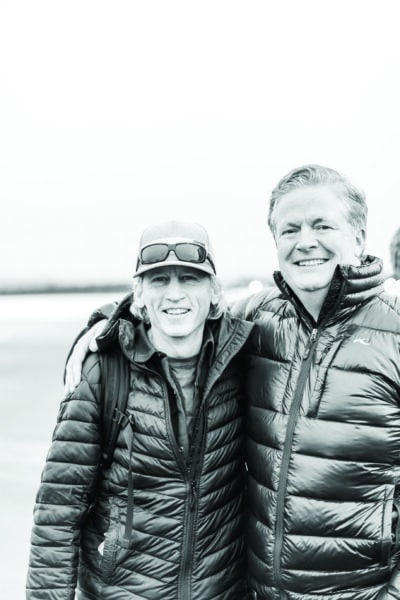
Byrne and YC ambassador Scot Schmidt. Photograph courtesy of Lone Mountain Land Company
Restoring Confidence
“When we brought the deal originally, Yellowstone Club was a huge consumer of capital,” Byrne recalls. “It was losing money hand over fist.” Not only that, but the club’s reputation had suffered greatly. “We didn’t expect to generate much revenue those first few years,” Byrne says. That was, in part, because he was committed to making good on the club’s debts. Again, rebuilding the club’s ties to greater Big Sky was paramount.
“Yellowstone Club couldn’t have had a worse reputation,” he says. “So many vendors hadn’t been paid. The club didn’t have good standing in the community. We knew that we wouldn’t succeed in bringing Yellowstone Club and the resort and the budding town together if we didn’t make those partners whole. The debt and ill will extended all over southwest Montana. We needed to build goodwill, not for monetary gain, but because that was and is a core tenet of who we are.”
“We needed to build goodwill, not for monetary gain, but because that was and is a core tenet of who we are.”
Sam Byrne
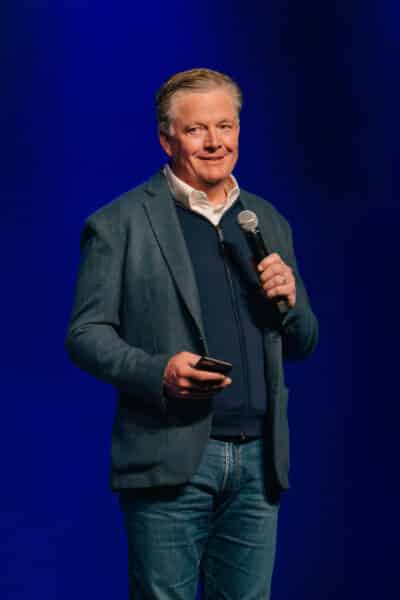
Sam Byrne speaking at a YCCF fundraiser benefit for the Big Sky community. Photograph courtesy of Lone Mountain Land Company
A key element of the bankruptcy plan was to deliver checks to every single creditor at 100 cents on the dollar. “We knew we couldn’t function in the community if we didn’t get that money to the people who had been working at and building the club,” he says. Byrne hand-delivered a number of those checks.
That “repair and rehabilitate” commitment was the first step to bring YC out of bankruptcy and into profitability and ongoing success. As such, Byrne and CrossHarbor were the driving forces behind the revitalization of Yellowstone Club, but Byrne emphasizes that it wouldn’t have been possible without the support of the club’s original 260 members.
“I went to them and gave them all the right to co-invest in the deal. I said, ‘Listen, you have to be part of the solution here. If every one of you brings one great friend, we not only make the club better, but we get to the break-even operational standpoint.’”
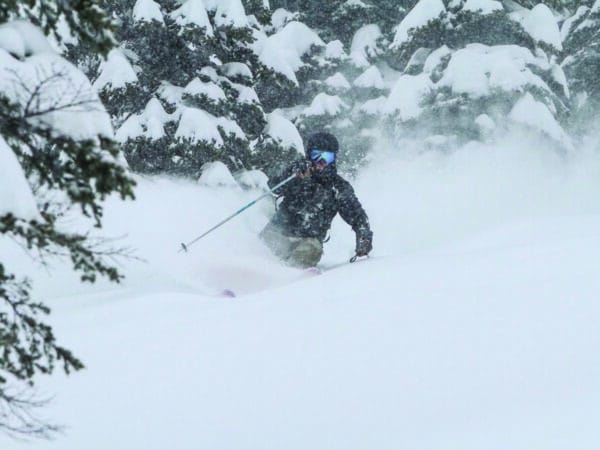
Byrne skiing at Yellowstone Club. Photograph courtesy of Lone Mountain Land Company
With that, CrossHarbor moved into the next phase: product creation. Working with the club’s developer, Discovery Land Company, “We wanted to create ways to get people into custom homes in a very short period of time,” says Byrne. “We did a lot of market study work to create the best possible product.” The emphasis, and Byrne’s personal passion, was on the club’s one-of-a-kind skiing. Delivering the best possible ski experience meant investing in snowmaking, new lifts, a 30 percent expansion of skiable terrain, and everything necessary to nurture the club’s trademark offering: the ability to ski right up to a lift, get on immediately, and savor the mountain’s world-class snow.
But the restoration of Yellowstone Club required more than a cash infusion. It required a face. After so many years of chaos, the homeowners, members, employees, and contractors needed to see someone steering the ship. Between Mike Meldman from Discovery and Sam Byrne from CrossHarbor, the people in charge committed to being on site every weekend. For the first five or six years—nearly every weekend, every holiday, every school break—Sam Byrne and his family were on the ground in Big Sky.
That invest-and-reinvest strategy continues. “We added summer experiences and built a tremendous amount of infrastructure for retail and ski operations,” says Byrne. “That includes a $40 million event barn and performing arts center. But more than that, we were no longer an anonymous entity. We put forward a name and a face and the accountability that comes with it. From that point forward, I stopped looking at CrossHarbor, and later Lone Mountain Land Company, as developers of distressed properties, but as people helping to build neighborhoods and towns. We wanted to develop a sense of place. You do that by putting great people on the ground. ”
Today, Byrne looks back on that phase with pride: “The membership invested in our success both emotionally and financially. What I gave back to them was infrastructure they never expected. But probably more important than that, Yellowstone Club stopped feeling like an island separate from Big Sky. Instead of just a vacation getaway, it began to feel like home.”
Beyond The Club
Let the above story serve as preamble because it was just the beginning of CrossHarbor’s presence in Big Sky. “As we were building out Yellowstone Club,” says Byrne, “we saw the need for more amenities outside the gates: expanding airlift into Bozeman, getting a downtown built in Big Sky, building a hospital, developing community housing, connecting neighborhoods with trails, rehabilitating second-growth forest, protecting the water and the views… all of those needs led us to making significant additional investments in Big Sky.”
In looking beyond Yellowstone Club, Byrne once again recognized the need for a strong local face and presence. CrossHarbor had succeeded in engineering the renaissance of Yellowstone Club, but the shared vision for the broader community required a different kind of presence. CrossHarbor, which had purchased both Spanish Peaks and Moonlight Basin from bankruptcy in 2013, was and is a real estate investor, not a developer or marketer or community builder.
“In 2014, CrossHarbor created Lone Mountain Land Company to help guide thoughtful and sustainable development throughout Big Sky. That’s when we went from being investors and financiers to developers and community builders.”
Matt Kidd, LMLC Managing Director
In 2014, CrossHarbor created Lone Mountain Land Company to help guide thoughtful and sustainable development throughout Big Sky. It was, says LMLC Managing Director Matt Kidd, “a monumental step forward.” Kidd, who was already part of CrossHarbor’s Big Sky/Yellowstone Club team at the time says, “That’s when we went from being investors and financiers to developers and community builders. Yellowstone Club became part of the broader community, and Spanish Peaks and Moonlight Basin followed. That was good for the foundational investment over the long-term. But more importantly it’s good for Big Sky. Without those communities we don’t have the resources to build parks and hospitals.”
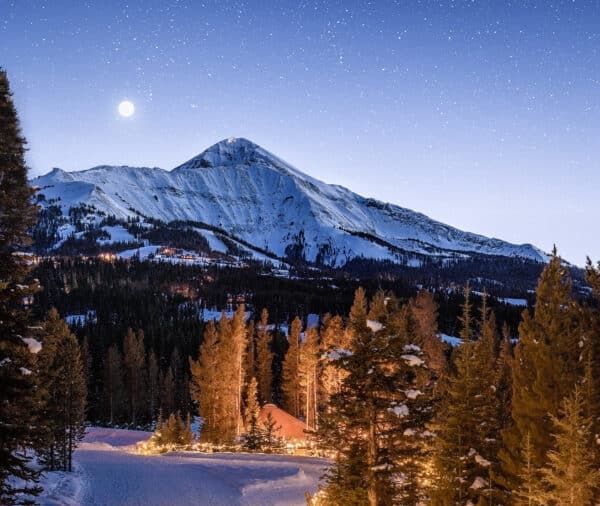
Moonlight Basin Lake Camp with views of Lone Peak. Photograph by Zak Grosfield
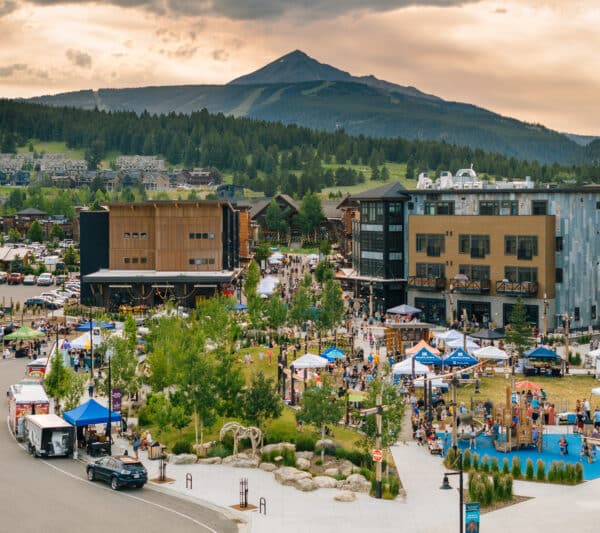
A lively Farmers Market in Town Center. Photograph by Joe Esenther
If real estate investors typically take a short-term view built around profit, as a community builder, Lone Mountain Land Company’s vision is something else entirely. “We take the long-term view,” says Kidd. “If we can help Big Sky grow as a community, then everyone benefits. There’s not a single challenge in Big Sky we’re not actively addressing.”
For Kidd, the formation of LMLC was also an opportunity to build a local team—and in the process become a local himself. “I had been with CrossHarbor since 2009, and in fact I was on a plane to Big Sky on my third day on the job. I’d never been to Montana before. But the first time I drove up the canyon, I knew Montana was going to change my life.
“I bought the first house that Lone Mountain built in Spanish Peaks,” he recalls. “By 2014, it was becoming clear that Big Sky would be my focus and my future.” Kidd and his family started living in Big Sky all summer and winter, but Kidd was still spending time in CrossHarbor’s Boston office. In 2019, he became a full-time Big Sky resident. “I live here and love living here. I devoted a huge amount of my personal and professional life to this place. I enjoy Montana. I drive my kids to baseball and soccer games just like every other Montana parent.”
Having witnessed how taking accountability and joining the community changed Yellowstone Club through Byrne’s initiative, Kidd set about building a Lone Mountain Land Company team of like-minded folks who would put Big Sky first because they too were raising kids and volunteering locally. “Today,” says Kidd, “Sam and I are just part of that team. Everyone at Lone Mountain Land Company takes accountability. We are committed to maintaining the qualities that make Big Sky special. We’re all-in. We live in the community we’re working in, so it’s natural for us to be stewards of the land, to always try to do the right thing.”
The ongoing development of Town Center is a clear example of this dedication, says Byrne: “We saw the community needed more food and beverage outlets, more retail activity, gathering places, and a community center, as well as community housing, conventional housing, and hotels.”
Looking back, Byrne acknowledges that getting to this point entailed many challenges, ranging from financing to public relations, and the simple fact that almost every project and advancement took longer than anticipated. But when he is out on the mountain with his family, he’s reminded of what drew him to Big Sky in the first place: what is now 9,000 acres of skiable terrain when you combine Big Sky Resort with the Yellowstone Club. “We will always deliver on the experience, on being the Augusta of skiing, and delivering an equivalent experience in summer. But now we’re also delivering on a dream that I didn’t originally envision. We aren’t just building world-class resort communities and infrastructure, we’re working with everyone in Big Sky to turn what was once a smattering of isolated developments into a hometown.”
“We aren’t just building world-class resort communities and infrastructure, we’re working with everyone in Big Sky to turn what was once a smattering of isolated developments into a hometown.”
Sam Byrne
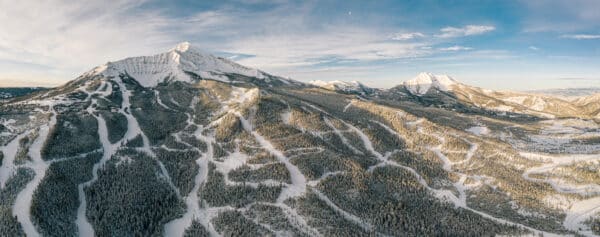
Panoramic view from Moonlight Basin. Photograph by Jonathan Finch
VIEW FULL ARTICLE ON BIG SKY LIFE
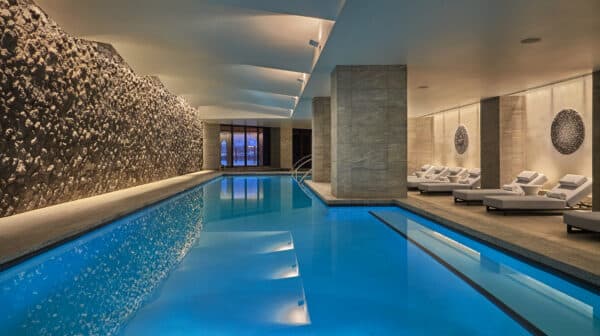
From Anguilla To Australia, Forbes Travel Guide’s 2025 Star Award Winners
The 67th annual luxury hospitality awards celebrate the world’s best hotels, spas, restaurants, ocean cruises and—new this year—cruise restaurants. The world’s most luxurious hotels can often be discovered in the unlikeliest destinations. From the ancient streets of Azerbaijan to the rugged terrain of Western Montana, Forbes Travel Guide’s annual Star Awards celebrate hospitality’s finest across […]
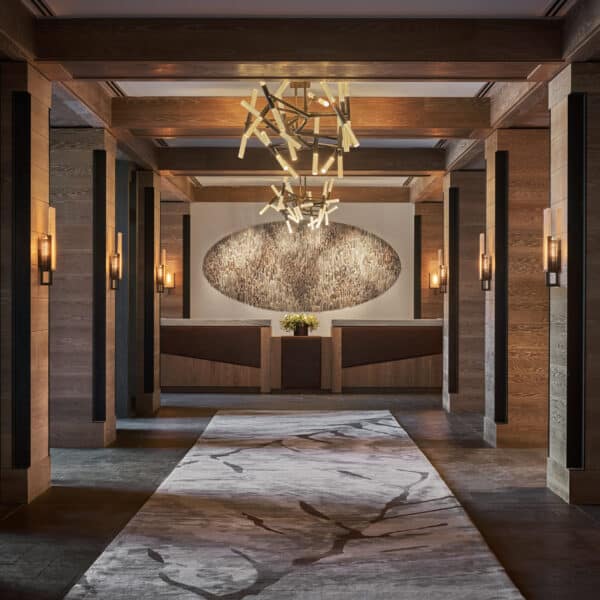
Explore Montana’s Newest Luxury Hotel
Montage Big Sky opens for year-round adventure in the Rocky Mountains Montage Big Sky, a modern alpine retreat offering an elevated spirit of comfort and distinctive amenities that epitomize today’s sense of luxury, is now open in an idyllic location for year-round adventures in Southwest Montana. The resort is located less than an hour from […]
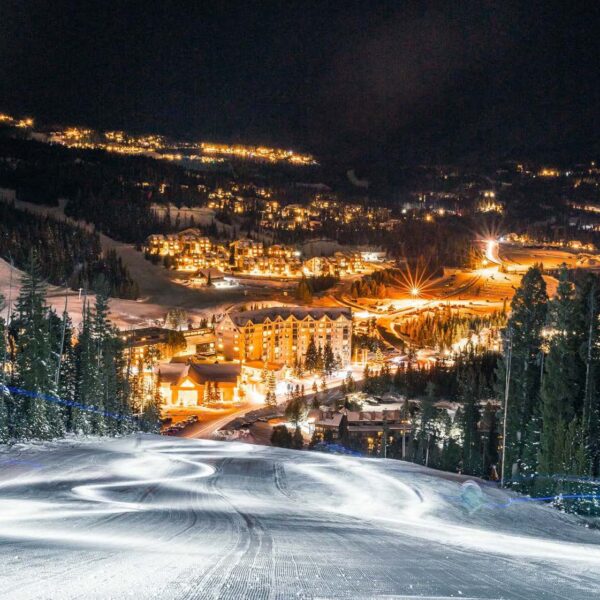
News You Need To Know 2023
A Few Highlights in Big Sky TAKE ON BIG SKY BY THE LIGHT OF THE MOON THIS WINTER, AFTER THE LIFTS CLOSE, the groomers will head straight to Andesite to buff out the snow for night skiers. Except it’s not the type of night skiing you might remember from childhood with splotchy stadium lights on […]